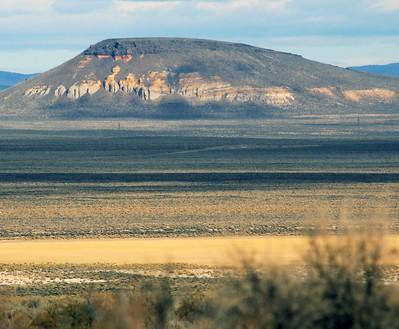BLM planning prescribed burning in NE California, NW Nevada
Organization:
BLM Office:
Media Contact:
ALTURAS, Calif. – Fire crews from the Bureau of Land Management’s Applegate Field Office will be completing prescribed burning projects in northeast California and northwest Nevada, as fall, winter and spring weather conditions allow.
Residents in and near the California communities of Dorris, Fall River Mills, Madeline, Alturas, Fort Bidwell, and Cedarville may see smoke, as will people traveling in the Vya area of northwest Nevada. Impacts are expected to be minimal. Burns will be ignited in accordance with provisions in carefully designed burn plans, and only when weather allows for safe and successful burning.
The BLM’s Fuels Management work is critical considering the vast spread of wildfire risk throughout the West. “These projects are designed to remove fuels to reduce the risk of catastrophic wildfires that could damage natural resources and communities,” said Dereck Wilson, manager of the BLM Northern California District.
Projects are as follows:
- Upper Tuledad, 20 miles east of Madeline, Calif.: 150 acres of piled juniper,
- Modoc Gulch, 4 miles southeast of Dorris, Calif.: 1,300 acres of piled juniper,
- Vya projects, 20 miles northeast of Fort Bidwell, Calif.: 3,600 acres of piled juniper,
- Twin Lakes, 18 miles southeast of Cedarville, Calif.: 200 acres of piled juniper,
- Bare Creek, 21 miles east of Madeline, Calif.: 300 acres of piled juniper,
- Dry Cow, 5 miles east of Madeline, Calif.: 250 acres of piled juniper,
- Nelson Corral, 6 miles northwest of Madeline, Calif.: 100 acres of piled juniper; and
- Hogback, 3 miles southwest of Fall River Mills, Calif.: 400 acres of woodlands.
The BLM’s Fuels Management program conducts a wide variety of active management vegetation treatments using mechanical, biological, and chemical tools, and prescribed fire. The program includes creating fuel breaks to protect resources and provide safe access for firefighters, reducing fuel loads by removing trees, shrubs, pinon-juniper and invasive species, reducing fire risk near communities and infrastructure, targeted grazing, and using herbicide plus seeding to restore rangelands and break the fire-cheatgrass cycle.
More information is available by contacting the BLM Applegate Field Office at 530-233-4666.
The BLM manages about 245 million acres of public land located primarily in 12 western states, including Alaska, on behalf of the American people. The BLM also administers 700 million acres of sub-surface mineral estate throughout the nation. Our mission is to sustain the health, diversity, and productivity of America’s public lands for the use and enjoyment of present and future generations.

